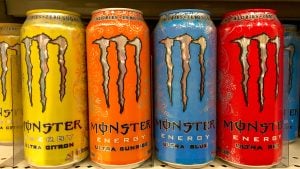Stock splits are a bullish sign that management sees more room for growth. Although they technically mean nothing as to the operation of the company, the market still sees them as a positive development. Stock-split stocks are more affordable and more liquid, meaning there are more shares available to more investors.
But they really are a non-event. It’s like getting 12 slices of pizza at half the price of six slices at full price. Warren Buffett doesn’t like stock splits and won’t ever split Berkshire Hathaway’s (NYSE:BRK-A, NYSE:BRK-B). He jokes, “May you live until the (class) A stock splits.”
Because institutional investors heavily influence the actual trading of a stock, a split will likely have little bearing on the ultimate performance of the shares. There are also studies indicating stock splits have little real-world impact. Still, due to the emotional attachment retail investors have for them, companies continue to split their stock.
Below are three stock-split stocks that divvied up their shares for investors within the last year. Whatever the pros and cons of splitting are, these stocks still have more room to run.
Celsius (CELH)

Beverage maker Celsius (NASDAQ:CELH) split its shares 3-for-1 in November. The stock price fell from $150 a share to $50. At the time, Celsius was roaring ahead 55% in 2023. Since the split, the stock is essentially flat versus a 7.5% gain in the S&P 500. Although that seems to validate the lack of influence splits have, Celsius has long-term growth potential.
The company is capitalizing on the currently trendy “functional beverages” buzz phrase. Functional beverages have perceived health benefits, such as energy drinks, juices, plant- or nut-based drinks, teas and so-called “smart beverages.” Celsius beverages are both sparkling and caffeinated, and they are rapidly growing.
Sales more than doubled last year, which was on top of them doubling the year before. Revenue has grown from $22.8 million in 2016 to almost $1 billion over the first nine months of 2023. Gross margins widened from 40.3% to 48.1% while it posted net profits of $1.81 per share versus losses of $2.26 per share last year.
Part of the reason for the massive growth is its low overhead business model. Celsius doesn’t actually manufacture its beverages but rather gathers the ingredients and gives them to third-party manufacturers to put together. It also has a partnership with Pepsi (NASDAQ:PEP) for distribution of Celsius products that began at the end of 2022.
Although functional drinks could just be a fad, analysts foresee the market growing at a compound annual growth rate of 7.2% through 2030. That creates a $353 billion market opportunity. Look for Celsius to participate in a large portion of that growth.
Monster Beverage (MNST)

Speaking of beverages, energy drink maker Monster Beverages (NASDAQ:MNST) split its stock 2-for-1 back in March of last year. The shares also underperformed the benchmark index afterward, rising 9% compared to a 26% gain. Still, it’s got good long-term prospects as well.
Monster Beverages has been a monster growth story for over two decades. It went public almost exactly 21 years ago and has returned some 127,000%. In contrast, the S&P 500 offered up total returns of 688% during that period.
Energy drinks remain a growth category and Monster plans on expanding them further internationally while continuing to build out domestic markets. It’s also benefiting from its relationship with Coca-Cola (NYSE:KO) and its bottlers. Monster has a long relationship with the beverage giant and continues to realize dividends from it.
One new avenue of growth will be in alcoholic beverages. Monster acquired the CANarchy craft brewer in 2022 and began rolling out products last year. It’s still a small business, but one that has potential for growth despite the overall decline in beer sales. Hard seltzer still has legs. Having numerous levers to pull at its disposal, MNST stock’s split shares will keep increasing in value.
Novo Nordisk (NVO)

After quadrupling over the past five years, Novo Nordisk (NYSE:NVO) split its stock 2-for-1 in September. It’s one stock-split stock still beating the S&P 500 with total returns of 13% versus 10% by the index.
The reason for the Novo Nordisk juggernaut is its twin weight-loss drugs Ozempic and Wegovy. They were adopted by celebrities and influences and sent demand soaring. The drugs captured massive market share in the process. The biotech is the leading maker of glycogen-like peptide-1 (GLP-1) therapies for diabetes and obesity. They have the pleasant side effect of helping you lose weight.
Third quarter net sales grew 29% over the first three quarter of 2023 driven higher by 167% gains in its obesity therapies. Ozempic sales are up 58% with a 59% market share but Wegovy, which was introduced a year ago, is soaring 492% higher. It has a 44% share.
Novo Nordisk is more than just its diabetes and obesity drugs but they are the main drivers of growth. They will likely remain so for some time even though other drug companies are introducing competing therapies. Which is why the biotech’s strong drug pipeline is key because they will help add to Novo Nordisk’s long-term growth.
On the date of publication, Rich Duprey held a LONG position in KO stock. The opinions expressed in this article are those of the writer, subject to the InvestorPlace.com Publishing Guidelines.

